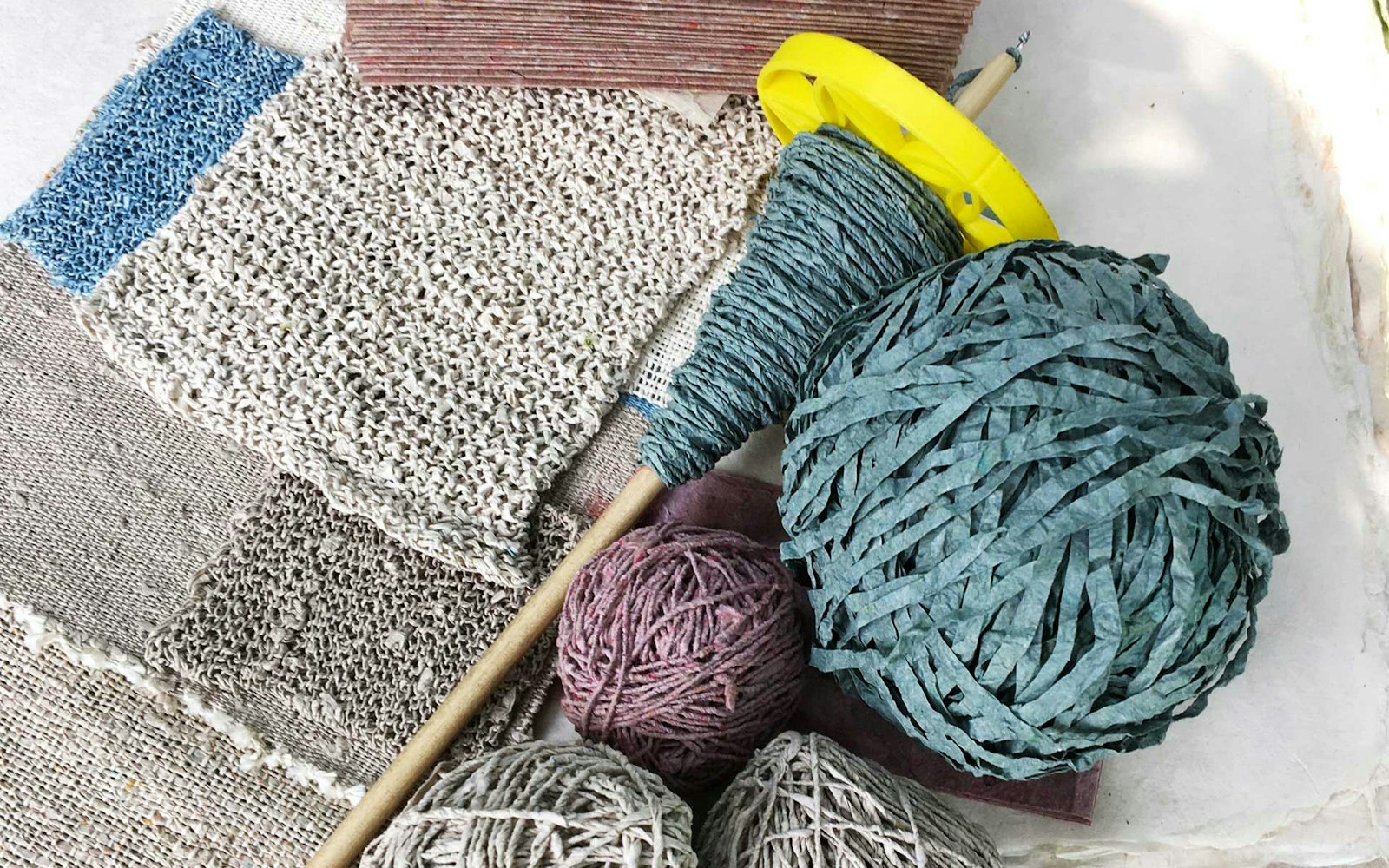The pulp (or paper) mulberry plant (Broussonetia papyrifera) is one of the most important botanicals used for making high-quality handmade paper worldwide, with historically significant production in Asia. The exquisite Asian papers are known to many as “rice paper.”

Samples of cloth woven and knitted with the project’s handspun paper yarn.
In 1969, 14 pulp mulberry plants were transported from China to Ghana with the intention of evaluating the potential for paper production in West Africa. After they were planted in a forest preserve, the project was dropped due to political upheaval. However, the climate provided ideal growing conditions, and the pulp mulberry thrived, becoming the most serious invasive nonindigenous plant in Ghana and causing significant damage to the natural environment and local agriculture. Various means of controlling it, including burning, yielded limited success, and now this plant—the very plant that has provided the fiber for some of the most beautiful and important paper production in the world—is found in more than six regions of Ghana and continues to damage the environment.
In 2009, The Ghana Paper Project began developing and producing handmade papers using the invasive pulp mulberry, sometimes in combination with other local botanicals and textile waste from the local fashion industry. The project is now known as the Krataa Foundation. Krataa is the word for paper in Twi, the local language spoken in the area where the paper production takes place, and translates into English as “image of the soul.” The foundation has produced several successful bodies of work including a portfolio of high-quality handmade papers suitable for a variety of artistic and functional purposes; a series of functional, artistically designed objects covered in handmade paper, such as folding screens and lamps, produced in collaboration with local craftsmen; and a fine-press artist’s book exclusively using papers developed by the project that can be seen in major museums and library special collections internationally.

One of the project’s spinners spins paper on a Turkish-style spindle.
In developing viable products with Ghanaian handmade paper, participants in the project considered what could be borrowed from Ghana’s lively textile traditions. With mentorship from masterful paper spinner Velma Bolyard, the project artisans studied the production of shifu in Japan (see “Paper Threadmaking for Shifu” by Susan J. Byrd, Spin Off, Spring 2020), which features cloth made from mulberry paper that has been spun and woven. Modifying the traditional Japanese techniques, the Ghanaian papermakers have learned to spin paper thread strong enough to be woven and knitted. While they have yet to produce this paper thread in large quantities, there is significant local interest in the process. In a place where textiles are profoundly valued and understood by virtually everyone, there is remarkable potential for the development of uniquely Ghanaian commercial and artistic products that make use of the paper thread.
To learn more, visit ghanapaperproject.com or follow the project on Instagram @theghanapaperproject.
Mary Hark is the proprietor of HARK! Handmade Paper, a fiber/mixed-media artist, a professor of design studies at the University of Wisconsin–Madison, and a passionate advocate for sustainable papermaking in Ghana, West Africa. To learn more, visit maryhark.com.

